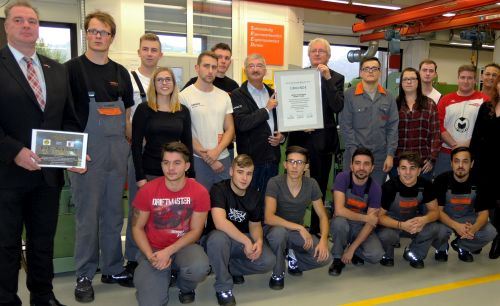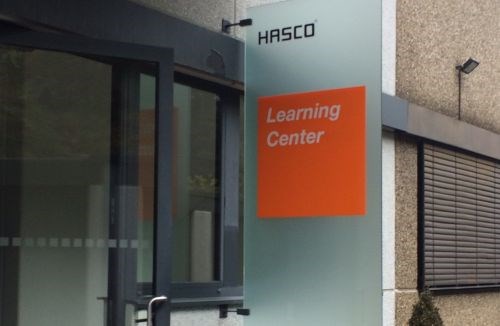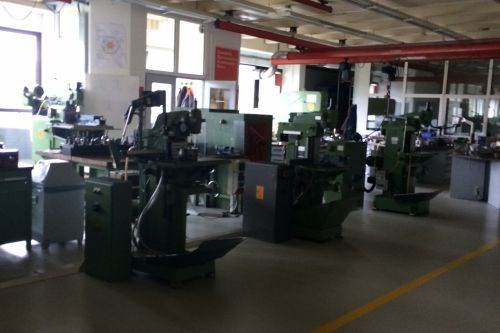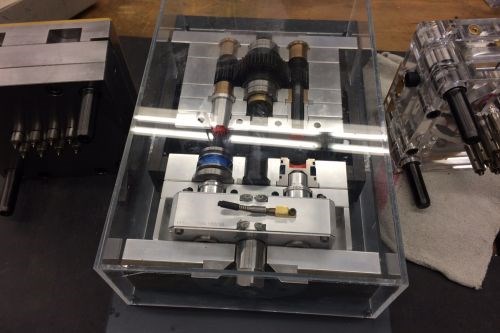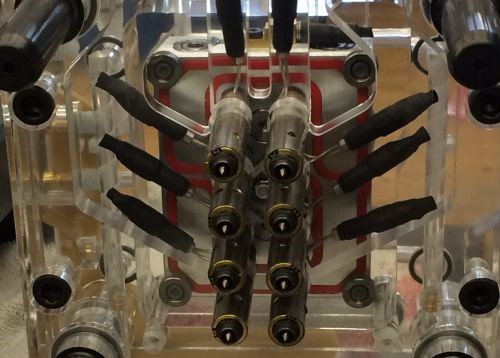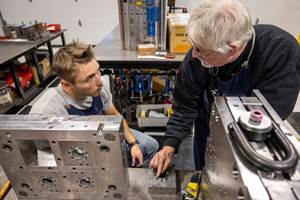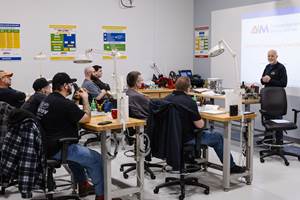Planting the "Seed"
Last week I shared my observations during a facility tour of mold component supplier Hasco at the K show. One highlight was its Learning Center SEED apprenticeship program, so I wanted to dig a little deeper with the instructor and three apprentices to share how the program works.
Last week I shared my observations during a facility tour of mold component supplier Hasco at the K show. One highlight was its Learning Center SEED apprenticeship program, so I wanted to dig a little deeper with instructor Mr. Andreas Wünsch and three apprentices, Alina Stahlschmidt, Lukas Frasch and Robin Klinker to share how the program works.
MMT: Tell me a little about the history of SEED.
MR. ANDREAS WUNSCH: Apprenticeships at Hasco have a long tradition. In over 45 years, we trained more than 400 young people, many of which have stayed at Hasco to further their careers. Twenty-five percent of the current Hasco staff in Germany had training at Hasco. including our executive vice presidents, Mr. Paulmann and Mr. Brandt. Then in 2011 we launched our People Development Program, which includes many different ways to train our employees including SEED in 2013.
MMT: Explain the SEED philosophy.
WUNSCH: The name SEED was inspired by the biological process of growth and photosynthesis. We will give our best input and environment to grow, but the process itself must be one’s own responsibility. The name says everything we want to achieve. SEED translates to S = selbstständig= self-contained, E= eigenverantwortlich = responsible, E= ergebnisorintierte = results-oriented; D=Denker =Thinker.
We have a training center with modern machinery for the technical training sessions. This center is used for basic apprentice education and employee training as well as new employee onboarding. We offer two- or three-year apprenticeships that include time in the various "training areas", such as production and R&D or marketing and human resources. During this time apprentices are part of a functional team and support the department by taking over real tasks and projects lead by a mentor in the department. All mentors were trained for the role. After completing each training area, a structured feedback session is planned between the apprentice and mentor, which allows both parties to assess performance and help determine the apprentice's career pathway. We also have a session for our internal senior specialist to train apprentices on commercial knowledge, steel facts, market data and customer information.
We promote collaboration between customers and apprentices to enable real business experiences during projects. For example, one apprentices worked with one of our customers, “Pöppelmann” in building a mold. The project group started with the design of the plastic part and presented the final product a year later to the trainer and management of Hasco and the customer.
MMT: How is SEED different from other apprenticeship programs in Germany, in Europe, in the U.S.?
WUNSCH: There is a standard approach in Europe for training young people, but each country has its own approach, so it not so easy to compare. In Germany, we have a good dual-apprenticeship, which means classroom time and working in industry, but with SEED we go one step farther including the training areas, training sessions, projects and feedback sessions.
MMT: What is the key to a successful apprenticeship program?
WUNSCH: The support of the CEO and management, and qualified, ambitious mentors and trainers. Also, good collaboration with schools and a solid recruitment process to find the right young people.
MMT: How do you measure success?
WUNSCH: By the demand of our internal customers within the different Hasco departments. Meaning, do they prefer to recruit an apprentice or hire an external candidate. We also check grades and feedback forms. To date, we have an 83-percent success rate. Forty-five years of apprentices at HASCO and, today over 800 people work at Hasco globally. Twenty-five percent of the 380 people working at heardquarters in Germany is from our apprenticeship program.
MMT: What are the future plans for SEED?
WUNSCH: We want to implement a “training area” at a moldmaker or molder customer and offer to train their apprentices at our facility. We have some potential partners who like the idea of exchanging experiences and points of view. We are also hoping to implement this globally.
The Apprentice View
Related Content
Making Mentoring Work | MMT Chat Part 2
Three of the TK Mold and Engineering team in Romeo, Michigan join me for Part 2 of this MMT Chat on mentorship by sharing how the AMBA’s Meet a Mentor Program works, lessons learned (and applied) and the way your shop can join this effort.
Read MoreUnique Mold Design Apprenticeship Using Untapped Resources
To help fill his mold design skills gap, Jeff Mertz of Anova Innovations, is focused on high schools and underprivileged school districts, a school that has lower graduation and college entrance rates. The goal is a student-run enterprise.
Read MoreEden Tool and Eden Manufacturing: A Story of Resilience, Growth and Innovation
This critical parts manufacturer, founded on solid tooling fundamentals, didn’t get derailed with the unexpected passing of the owner because leadership was already building a solid business, not just a good tool shop. Here’s how they managed change incrementally… and they’re not finished yet.
Read MoreMold Maintenance Continues to Matter: Enhanced Training Program in a New Facility
I attended a MoldTrax mold maintenance workshop in 2019 and shared my experiences, and despite changes in ownership, the workshop's remarkable value endures, as discussed in a recent Q&A with the current leadership.
Read MoreRead Next
How to Use Strategic Planning Tools, Data to Manage the Human Side of Business
Q&A with Marion Wells, MMT EAB member and founder of Human Asset Management.
Read MoreReasons to Use Fiber Lasers for Mold Cleaning
Fiber lasers offer a simplicity, speed, control and portability, minimizing mold cleaning risks.
Read MoreHow to Use Continuing Education to Remain Competitive in Moldmaking
Continued training helps moldmakers make tooling decisions and properly use the latest cutting tool to efficiently machine high-quality molds.
Read More

